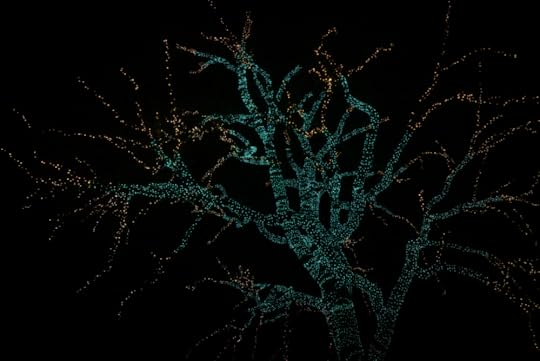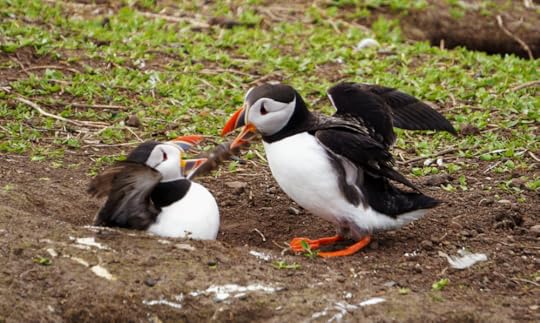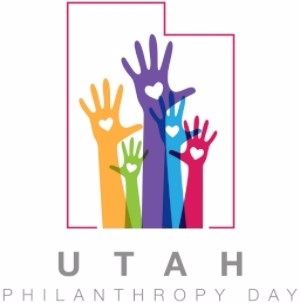Justin Harnish's Blog
November 7, 2022
The Age of Exponential Growth in Knowledge

If you were born anywhere in any station except exultant royalty in any year in the first millennia A.D., your life and knowledge of the workings of the most basic of physical systems would be the same as someone born hundreds of years BOTH before and after you.
However, in just two generations’ time from my grandfather to me, we have seen the invention of two universal computing machines (both classical and quantum computers), a formulaic understanding of material, information, and computation, and machines that can detect light and shadow from distant sun-planet systems, the distinct qualities of particles after hadron collision, and the waves of gravity caused by distant black hole collisions. We stand on the cusp of creating superintelligent machines, living on other planets and in interstellar space, and having an abundance of clean energy, asteroid minerals, lab-grown food, automated labor, and instantaneous information.
This handful of generations will be the last to truly know a time where our knowledge of existence was not advancing at an exponential rate. We are at an inflection point in our growth of knowledge where before us there was not a critical mass of sound explanation or technological sophistication or resourcing capability, but after us, decisions will come with greater artificial intelligence and have both a more granular and more global understanding, a more dynamic knowledge graph of cause and predicted effects.
It has always been difficult for humans to understand their own time, especially when it is one of extreme dynamism. This has never been more true than now. The comprehensibility of the universe, coupled with our knowledge of, and ability to construct universal computers and machines, is only bounded by the Laws of Physics, a bound which allows for a near-infinite set of possibilities.
And most of this possibility—possibility our generations will create—is positive! Abudance in clean air, water, and food, the elimination of toil for resources, decisions made not by the body politic but scientifically are being researched NOW. Utopias never free from worry, but monitored and controlled to recognize chronic and acute issues and intelligently target resources and research to understand and overcome the existential, species-ending filters encountered now—before we get our collective shit together around species-based global scientific decision making—will be the most pressing, even if they are not the most difficult. All of the problems of species survival are tenable, now given our level of scientific understanding—what matters is if we can continue to place one foot in front of the other politically to overcome tribalism and myopia, all while chewing gum and resourcing scientific advances in abundance in human survival factors (air, water, food), luxuries (automated labor, free information), and the exploration and settling of lunar, extraterrestrial, near-earth orbital, and other habitats.
We can do it! We are a social organism that only needs casual reminders (like the ones in this Substack) that human love and connection is worth propagating. We are a creative and caring species that can overcome our genetic predispositions to conquer to instead love and understand and experience. We live in the most interesting and advanced time in human history… it also happens to be the most moral, compassionate, and caring. If your identity were shrouded in a veil of ignorance of your ability, race, class, sexuality, gender-identity, etc. and you were required to choose a time in human history to live, the present would be the objective optimal choice. This vector has only continued to improve and it is available to us to choose how the future progresses, for we are not ignorant of our biology or the sociology that imparts both distinction and collectivism on each of us and gives us our role to play in the present and for posterity.
We can do it! Problems exist, but problems are solvable. Both controlled, deterministic, and dynamic problems can be understood and solutions derived. We can write the story of posterity as we work through the exponentiation in knowledge where web 2.0 runs for only 10 years before web 3.0 and that will be a small fraction of the change from when quantum computers are programmed by as many people as work on classical ones. The time to change the future for the optimal, custom well-being is now!
October 24, 2022
Precious Consciousness

Recently, I’ve not been able to fall asleep until hours after I’ve lain down in bed. I’m not having particularly profound or disturbing thoughts, I am just awake. Moreover, my practice does not really make this time mindful, I grasp for the consciousness off-switch and in doing so, suffer doubly: the unease of centering as a self and the sleeplessness that started the whole vicious cycle. It is at times like these, lying awake, that the states of sleep and consciousness and the transition in between present themselves as most precious, to be handled with care.
You’ll know what I mean if you miss more than a few hours of sleep over a couple of nights. You’ll think you have forgotten how to do an essential process—like breathing or eating—and it’ll never come back! Do I fall asleep on my left or right side? Count breaths? Am I more or less mindful?
Where I’m currently at with my practice, I’m less mindful in the minutes (and on some unfortunate nights, hours) before sleep. A present moment of just consciousness would be fine, but a mind full of experience seems like what I get and the opposite of what I need. Obviously this runs counter to the whole project of an examined life, which makes it all the more interesting and precious.
Both a full experience and its restful cessation are necessary, but the transition seems to offer a major difference to think about both in the here-and-now and as an inquiry into the final sleep of death.
For regular sleep, a heart rate decrease signifies sleep, but like with all things, we do not consciously will sleep into existence. The switch is mysterious and often our attempts to flip it put it further out of reach. If there was a greater experiential anecdote to the lack of free will than a mindful practitioner—trained in the subtleties of being aware of thoughts and other qualia—who nevertheless tried to force sleep on a tired self, I cannot come up with one. Instead, the jujitsu of just maintaining practice, noticing thoughts and sensations as they arise, will just as readily find the unconscious switch to the unconscious as would lying mindless and trying not to think about it, or counting sheep.
It is at least as likely that—upon death—we will rejoin some formless, idealist consciousness fabric as that consciousness ends when life ends. We just don’t know and that means 50:50 consciousness:unconsciousness. Now it wouldn’t be the same consciousness, but if there is some machine elves world over the horizon of death than this transition is extraordinarily precious as well.
The training required for death’s transition might be very different than mindfulness. If we assume, as we must, that further transitions are unknowable, than the transition at death is forever, our only landmark in our beginning of infinity as the fabric of consciousness. Something not to be missed! Furthermore, if we hope to grasp this transition at all, we may be just as responsible to make a study of lucid dreaming as mindfulness.
In my friend Machiel Klerk’s new book, Dream Guidance, he lays out the important steps to enable lucidity in dreams and seek guidance on the other side of sleep. His recommendations focus on preparation, intention, and having ready a question you are seeking guidance for. One might well take this advice as a guide for a lucid transition in death: to take as an intention (as much as health and mindfulness allow) to be open awareness during this transition from felt-to-fabric consciousness. But you can leave out any cognitive ask in this final transition—you are no more your last thought than you are your next one!
October 20, 2022
In the thick of it
Mindfulness only works, when it works

If there is a place where my mindfulness practice does not reliably go—it is into the thick of turmoil and upset in my close relationships. I react, rise to anger, and miscommunicate—more often than not. It has caused some true heartache and I know better. But no matter my practice, a fight crystalizes thought over awareness and winning becomes the motivation instead of listening.
My wife tells me I’m not meditating right. Sometimes, she is right. I don’t catch myself in the moment until way after it is too late—something egregious has been said or done. It’s like falling asleep at the wheel of a car—all of a sudden you snap back, having forgotten a very important time at a very important task. Just like the noticeable crystallization of a thought during meditation, a fight crystallizes thoughts of “I’m right, she’s wrong” and freezes out awareness.
In the rare cases I’ve not taken the bait, I listen and can be more sympathetic, often to the point of being sanctimonious (at least as perceived by the Other), and failing by running into the ditch on the other side of the road. But this seems better, more alert.
As Sam Harris states, “mindfulness meditation only works if it works.” Working requires starting over and committing to a harmonious middle path where nothing is taken for granted and everything, even a fight, is an opportunity for mindfulness and clear seeing.
Making your next fight with your spouse, kids, or coworkers and opportunity to truly listen, go so far as to kindly and even-temperedly ask clarifying questions, try to reduce stress by offering safety valves like—“I appreciate that” or “please help me understand.” Avoid being passive aggressive. Perform your own mental jujitsu that winning is not scoring debate points, but instead being present, listening, and offering stress relief valves.
Make your practice in the thick of it for the well-being of your family and all sentient beings.
October 10, 2022
Being alert to grace

Will you be alert to grace when it is in your presence?
Yesterday and today I took a late afternoon shower. The early October afternoon sun, unobstructed by cloud or shade tree, manifested the cascading water in just the right way to create an ingratiated cross section of water and air elements. Yesterday, the angle was such that it nearly looked like words were formed in the negative of the air between the streaming water and today the cone was thicker and at eye level.
Grace may be my favorite religious word that I’ve chosen to give a more ordinary and illuminated meaning to. Grace is finding beauty and even assigning a sacred meaning to an ordinary event. Grace is the act of determining that you will appreciate—to the fullest extent you are able—something that illuminates the grandeur of existence or your experience of it. To be gracious is to act in harmony with a story that you want people in the present, and even people in a future without you, to tell about you. A legend built from your grace.
The practice and training of attention, both in the formal practice of meditation and in the slog of the ordinary moment-to-moment that is our lives passing away, helps us be alert to the subtleties of grace. But wait, there is more. Our compassionate practice, both in the good intention of loving kindness and in the act of service toward those who find the present life difficult, is an act of grace. Our smile or caring posture, of being at the right place with the magic words or the necessary and sufficient action, will play graciously for those on the receiving end.
This is why we pay attention and study our loving awareness—to be alert to moments of grace both for andfrom ourselves! We can play a key role in the grace of the world around us. If we feel angst or are overwhelmed by the world, seeking grace hones our attention to what is illuminating the ordinary... but we can do more, for others that are similarly seeking grace. We can be gracious, acting in small ways that bring solace and kindle a fire of strength in another. It doesn’t have to take much—mentioning the cloudless day, pointing out the playful laughter of children, or playing a few bars of soothing music—and letting grace take its course.
October 4, 2022
2022 Heart & Hands Awardee Utah Philanthropy Day celebration

I am so excited to be recognized as a 2022 Heart & Hands Awardee at the Utah Philanthropy Day celebration. My non-profit work with forcibly-displaced women has always been a central focus of my life and a way for my time to be spent with meaning. I have done the back-office work of Women of the World, supporting its technology, fundraising, strategy, and outreach.
I am so thankful to the people that make up the Women of the World community--our new neighbors who have graced us with their presence, the staff who work tirelessly to build custom solutions and lend a helping hand or a shoulder to cry on, and the Board of Directors who guide us in the dynamic world of non-profit management. Of course, my most profound thanks goes to my lovely wife and the Executive Director of Women of the World, Samira Harnish, for putting her heart and soul into the non-profit we started 13 years ago and doing it with grace and style.
This award was written by WoW's Board President, Debbie Mintowt-Czyz, who wrote the following lovely comments about my service at WoW.
"As a founding member of Women of the World, a boutique refugee agency, Justin has been a hands-on volunteer since its inception in 2009. His hard work, business acumen, and unending commitment have helped transform one woman’s dream of helping women refugees and asylum seekers achieve independence into a highly impactful nonprofit. Most of all, thanks to his endeavors in building the infrastructure behind the agency’s success, Justin has been instrumental in providing economic empowerment to thousands of women. For more than 13 years now, Justin has invested tens of hours every week ensuring that the agency is both effective and efficient. He is the unsung hero behind the scholarships, legal or housing advocacy, and employment opportunities that have benefitted the many displaced women who sought help at Women of the World and who now call Utah their home."
During Utah Philanthropy Day, we are honored to provide organizations the opportunity to highlight and honor one or more volunteers with a Heart & Hands Award. This award acknowledges those people who make significant contributions to an organization's mission through their volunteer or philanthropic service. This award category is for all nonprofits to present their star volunteers.
The Celebration is on Tuesday, November 15th at 9 AM at the Hale Centre Theatre in Sandy Utah. Join us for breakfast, network with other honorees, philanthropists, and organizations, and enjoy an uplifting awards ceremony. All Heart & Hands honorees will be highlighted during the awards ceremony and receive a Heart & Hands Award certificate and pin.
October 3, 2022
Featured in Voyage Utah Magazine

I am thrilled to be featured in the Hidden Gems section of the Voyage Utah Magazine. I was able to tell my story of writing my book Meaning in the Multiverse, starting the nonprofit Women of the World, and working as an engineer and product manager on some of the world's most advanced semiconductor and artificial intelligence technologies. I feel very fortunate to be given a platform to talk about my journey.
VoyageUtah is part of the LA-based Voyage Group of Magazines. Our mission is to promote mom and pops, artists, creatives, makers and small businesses by providing a platform for these hidden gems to tell their stories in their own words.
Thank you to Jessica Ramirez and the team at Voyage Utah for your time and for the quality article.
https://voyageutah.com/interview/daily-inspiration-meet-justin-harnish/
Living Scientifically

Don’t let someone from an older age cohort tell you different, we still live by our wits (and always will). Indeed, maybe now more so than ever. Navigating the world of corporate, social, and spiritual life requires studious attention to detail, a dynamism to adapt to change, all blended with a professional regard for the experiences and feelings of those around you. We are constantly checking in, experimenting, guessing, and examining—it can be exhausting.
But, like so much of life, a bit of perspective, a change in point-of-view can turn an aversion into an enjoyment. Curiosity is the key. Take an interest, delve into the details, and you will discover that the process of investigation—the method of scientific discovery—is a willy and fun-filled partner no matter the subject.
Conjecture. Criticism. Correction.
These three alliterative steps are all that are required to illuminate reality with detailed facts that will fill any concept with new depth and a grandeur beyond just passing perception.
Conjecture is inventive and imaginative. Here you use what you know—the explanations of others—to create a new guess that advances our knowledge. As a species, we have become good at hypothesizing beyond our perceptions and our intuitions—often taking turns toward a fantastical conjecture that regardless is still a true description of the way the world works. The universe was not built by processes intuitive to our kind of selected knowledge, so we can imagine and guess well outside our current comfort, build hypothesis from beyond physics (from metaphysics), and still be in the firm embrace of the first step of the method of scientific discovery.
But this conjective comfort ends as our guesses are tested by criticism. A review in reality is conducted on any and all hypothesis. Conjectures are criticized in numerous medium—experimental, mathematical, and philosophical—and must advance our epistemology. Our repeated review offers new firmament for conjecture in a dynamic process with the error correction.
The cycle renews in error correction, hypothesis are updated with new knowledge, nothing is ever taken for granted, resulting in explanations weathered by criticism that come to be regarded as a theory.
Living an examined life means both being cognizant of this concept generating process… and knowing when to just be with what is. Both offer ways to illuminate the ordinary.
September 27, 2022
Space for Others

Next time you are alone in a crowd, do a little meditation and record how you feel. You are alone of course, the sea of people are talking in groups or couples, walking or sitting or standing still, some might be looking in your general direction while others are turned the other way. Do you feel out of place looking at them in this way? What happens when one of them returns your gaze? Do you smile or quickly avoid looking at others, conscious only now in the Other’s gaze, that, to them, you are a self?
Imagine that the crowd was transplanted—in its hive of activity—in the middle of a purely selfless and loving moment of awareness during your second hour of mindfulness meditation. Is there space for them in your vast oneness with the universe? Of course there should be. The forms made in the formlessness of consciousness are not of your doing… leaf blowers happen to backyard sits, best not to label and be adverse, but what of this crowd of people? All with their own inner lives, and they are all (seemingly) including me as an idle identity… how to cope? Can we be loving and kind for all these Others?
The above questions convey the real difficulty. We are never more conscious of our mental model of a self, when we are investigated by another self, one clearly (or not so clearly) passing judgement. Even if this happens in a mindful moment, our concentration-breaking desire to communicate, explain our experience for the benefit of understanding, and find often ellusive acceptance is almost overwhelming. Without practice, we slip into self, drop our non-dual awareness, and ascribe a bot-like self to the unfortunate Other, setting them out as an object against the “backdrop” of the universe and consciousness.
In a recording of a Ram Dass talk for a podcast I recently listened to, he reminds us that our practice is not a selfish one, but is instead for the mutual benefit of all living beings. Our practice is aimed in improving our mind, eliminating its idiosyncrasies by freeing it from an ego, and being in relation with other beings who are more-or-less finding freedom on the same path. Our compassion is not only called upon when they suffer great pains, our consciousness must make space for them whenever we practice, it can be no other way, they are part of our loving awareness, an articulation of form out of a universe of process, complete with their own window on the ordinary illuminated nature of experience. Love them and make space, be one as consciousness with them and practice recognizing the thoughts that (errantly) separate you and them as selves separate from experience and one another.
September 20, 2022
An itch... in the middle of the room

Ever since restarting my meditation practice with longer (30-60 minute) daily sessions, I have come across some funny and intriguing anecdotes about the illusion of subject-object dualism in consciousness. A recent one that put a fine (and annoying) point on this self-less-ness was a simple itch in the middle of my family room.
To set the scene: I typically sit in my family room and meditate... looking across the room towards the west window. It is a basement room with a minimalist-ish set of adornments typical of many rooms of people who don’t have young kids. As I sat in a typical eyes-open, guided meditation, I started to take as the object-of-mindfulness a normal, non-threatening itch I had on my middle-right POV, an itch on my family room!
From my side of experience, the itch on my right cheek was emanating from my living room somewhere in a block of space beneath the top of the window and the floor, not all the way to the TV or the fireplace. What did I know of cheeks? How had I managed to miss such an obvious scratch of the itch of my headless and boundless awareness in all of the times I’d perceived an itch, sore, or swell someplace I could see was a remarkably different scene from that sensation? Of course mindlessness and the mental model of the self are the answers.
Sympathetic scratches are back in the moment I write this—overlayed on pen and paper are the little insect feet of a scratch, as bright in my experience as any, but given just the location of their appearance in my headless view of a world without my self, instructive in pulling me back to being mindful of one of the fundamental features of consciousness—it is your entire world—the in-here and the out-there intermingled and illuminated ONLY in awareness. Your mind’s eye is a phantasmagorical, multimodal experience factory, uniquely your own, and the only way you get to ever know the present.
September 15, 2022
The Aversion Constrictor

The key insight of Buddhism around suffering are almost algorithmic:
1. Things change
2. Grasping for pleasure will cause suffering when things change (#1).
3. Pushing away adverse emotions (like anger) will cause suffering when things change (#1).
4. Be mindful no matter what impermanent state arises.
As you get more comfortable in the practice of meditation, diving into negative feelings and emotions (as opposed to pushing them away to cause suffering, as in 3) is one of the best uses of the practice. What you will find is that the light of awareness can help you to overcome these emotions more quickly… but only with careful practice.
The first thing to recognize is the angry rerun. This thought of repeating the harmful experience in memory and recounting the hurt is what renews the aversion at its maximum level. Knowing that this angry rerun is not mindful and focusing attention on it allows you to be mindful of the residual pain of the aversion constrictor.
Just like a boa constrictor, negative experiences constrict our breath, focusing the body on short, fight or flight choppy breaths. Muscles tighten. Vision narrows.
Notice this for yourself. Dive into the sensations in your body brought on by negative emotions. Do you feel tightening? A pit in your stomach? Is your breath constrained? Pour your attention into these sensations. Be mindful of how they, like any other sensations, dissolve.
What happens if you have a memory of the painful experience? Does the dissolution of the sensation reverse course and constrict anew? We must meet our challenges mindfully, taking the odd and counterintuitive position of exploring our pain to avoid the suffering of attempts at pushing away these experiences—the grasping for only positive states that cannot be maintained. Know thyself in every fleeting moment, whether it has a valence of good or bad.



